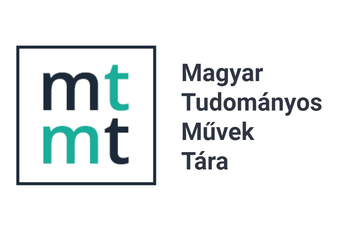The Right to Play: Interpretation through the Lens of the Convention on the Rights of the Child
DOI:
https://doi.org/10.46941/2023.e1.3Keywords:
right to play, children’s rights, protection of children, parental responsibility, parental care, parental rights and obligations.Abstract
Children’s rights are human rights. When internalizing this mantra, it is crucial to understand that children are not only the youngest and most vulnerable population group but also that they have their own particular needs. To ensure that these needs are met, we must recognize an additional subset of human rights that are unique to children. These are comprehensively represented in the United Nations Convention on the Rights of the Child, including, among others, the right to protection from all forms of violence, the right to play, and children’s right to express their views in matters affecting them. Children’s rights, however, require more than just an understanding of the relevant theory and implementation of these rights is lagging dangerously behind what is optimal. This shortcoming is further amplified in cases involving certain so-called forgotten rights, and even among these, the right to play is undoubtedly the red-headed stepchild of the Convention that is often overlooked and constantly undervalued.
References
Adamson, P. (2007) Pobreza infantil en perspectiva: Un panorama del bienestar infantil en los países ricos. Florence: Centro de Investigaciones Innocenti de UNICEF. Report Card Innocenti n 7. Availabe at: https://www.unicef-irc.org/publications/pdf/rc7_spa.pdf (Accessed: 12 December 2022).
Blatchford, P., Baines, E. (2019) Executive summary – School break and lunch times and young people's social lives: a follow-up national study. Report to Nuffield Foundation [Online]. Availabe at: https://www.nuffieldfoundation.org/wp-content/uploads/2019/05/Final-report-School-break-and-lunch-times-and-young-peoples-lives-A-follow-up-national-study.pdf (Accessed: 12 December 2022).
Csikszentmihalyi, M., Bennett, S. (1971) ‘An exploratory model of play’, American Anthropologist, 73(1), pp. 45–58 [Online]. Available at: http://www.jstor.org/stable/671811 (Accessed: 12 December 2022).
Froebel, F. (1887) The education of man. New York: Appleton.
Hughes, B. (1990) ‘Children’s play – A forgotten right’, Environment and Urbanization, 2(2), pp. 58–64.
Huizinga, J. (1938) Homo ludens: A study of the play element in culture. London: Maurice Temple Smith.
International Play Association (2010) Promoting the child’s right to play: IPA Global Consultations on Children’s Right to Play Report. Faringdon.
Lester, S., Russell, W. (2010) Children’s right to play: An examination of the importance of play in the lives of children worldwide. Working Paper No. 57. The Hague, The Netherlands: Bernard van Leer Foundation.
Office of the United Nations High Commissioner for Human Rights (1985) Report of the Working Group on a draft Convention on the Rights of the Child, E/CN.4/1985/WG.1/WP.25. [Online]. Available at: https://digitallibrary.un.org/record/85326 en (Accessed: 15 November 2022).
Office of the United Nations High Commissioner for Human Rights (OHCHR) (2007) Legislative history of the Convention on the Rights of the Child. [Online]. Available at: https://digitallibrary.un.org/record/602462?ln=en, (Accessed: 15 November 2022).
Ozanne, L. K., Ozanne, J. L. (2011) ‘A child’s right to play: The social construction of civic virtues in toy libraries’, Journal of Public Policy and Marketing, 30(2), pp. 263–276.
Piaget, J. (1962) Play, dreams, and imitation in childhood. New York: Norton.
Sutton-Smith, B. (1997) The ambiguity of play. Cambridge: Harvard University Press.
United Nations Children’s Fund (UNICEF) (2004) Despite progress, children’s rights far from universal [Press release] [Online]. Available at: https://crsreports.congress.gov/product/pdf/R/R40484/25 (Accessed: 15 November 2022).
UNICEF (2021) The state of the world’s children 2021 – On my mind: Promoting, protecting and caring for children’s mental health. New York: UNICEF.
UNICEF Data (no date) How many children are there in the world? [Online]. Available at: https://data.unicef.org/how-many/how-many-children-are-in-the-world/ (Accessed: 15 November 2022).
United Nations Commission on Human Rights (1978) Working documents of the 34th session, E/CN.4/L.1366.
United Nations Commission on Human Rights (1978) Report of the 34th session, 6 February–10 March 1978, E/CN.4/1292 [Online]. Available at: https://digitallibrary.un.org/record/220211?ln=en (Accessed: 12 December 2022).
United Nations Commission on Human Rights (1984) Report of the Working Group on a draft Convention on the Rights of the Child, Annex II, E/CN.4/1984/71.
United Nations Committee on the Rights of the Child (CRC) (2013) General comment no. 17 (2013) on the right of the child to rest, leisure, play, recreational activities, cultural life and the arts (Art. 31), CRC/C/GC/17 [Online]. Available at: https://www.refworld.org/docid/51ef9bcc4.html (Accessed: 12 December 2023).
United Nations General Assembly (1959) Declaration of the Rights of the Child, A/RES/1386(XIV) [Online]. Available at: https://www.refworld.org/docid/3ae6b38e3.html (Accessed: 12 December 2022).
United Nations General Assembly (1978) Question of a convention on the rights of the child, A/RES/33/16620/ [Online]. Available at: https://www.refworld.org/docid/3b00f1764.html (Accessed: 12 December 2022).
United Nations General Assembly (1979) International Year of the Child, A/RES/34/4 [Online]. Available at: https://www.refworld.org/docid/3b00f1b462.html (Accessed: 12 December 2022).
United Nations General Assembly Third Committee (1959) 14th Sess., 923rd mtg., A/C.3/SR.923
United Nations General Assembly Third Committee (1981) Status of a draft Convention on the Rights of the Child: Document submitted by Poland, A/C.3/36/6 [Online]. Available at: https://digitallibrary.un.org/record/34997 (Accessed: 12 December 2022).
United Nations General Assembly Third Committee (1959) Mexico, Peru and Romania: Amendments to the draft Declaration of the Rights of the Child (E/3229, chap. VII, text of the Commission on Human Rights), A/C.3/L.730 [Online]. Available at: https://digitallibrary.un.org/record/3886797?ln=ru (Accessed: 12 December 2022).
United Nations Secretary-General (1979) Question of a convention on the rights of the child: Report of the Secretary-General: Addendum, E/CN.4/1324/Add
United Nations Secretary-General (1980) Question of a convention on the rights of the child: Report of the Secretary-General: Addendum: New Zealand, E/CN.4/1324/Add.5, 3 [Online]. Available at: https://digitallibrary.un.org/record/630960?ln=en (Accessed: 12 December 2022).
Vygotsky, L. (1978) Mind in society: The development of higher psychological processes. Cambridge, MA: Harvard University Press.
Vygotsky, L. (1967) ‘Play and its role in the mental development of the child’, Soviet Psychology, 5(3), pp. 6–18; https://doi.org/10.2753/RPO1061-040505036.





